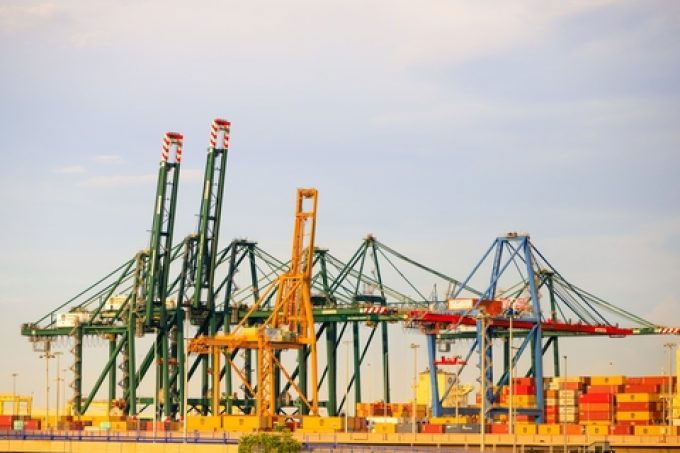


Container spot freight rates on all major routes experienced another week of modest declines as carriers failed to raise prices ahead of a series of general freight rate increases (GRI) on December 1.
Donald Trump's announcement that he would impose a 25% tariff on imports from Canada and Mexico, and a 10% tariff on imports from China, has had no discernible effect.
Drury's World Container Index, published this week, showed rates on the Shanghai-Los Angeles route fell 5% week on week to $4,250 per 40ft, while Shanghai-New York rates fell 1% to $5,192 per 40ft.
While there were expectations that the tariff announcement would lead to a renewed rush for U.S. imports and a spike in spot prices, that doesn't seem to be happening right now, and Xeneta chief analyst Peter Sand said it's not the first time U.S. shippers have faced a risk in recent months.
"Many U.S. shippers have been front-loading throughout the year to prepare for cargo disruptions in the Red Sea and the eastern U.S. and Gulf Coast, which is why we may not see a significant increase in demand as a result of the tariffs, as some of the tariffs are already in place and inventories may already be full."
"Anything that can move, you can move," he added.
However, with the implementation date of the new tariffs still unknown, there is a good chance that Trump will somehow impose them on his first day in office in January, which could cause some importers to scramble to import goods in a very short period of time.
"If January 20 is the true deadline, then every shipper will soon run out of time and need to ship in the next 30 days," Mr. Sander said.
He added that both spot and contract freight rates on trans-Pacific routes are on a downward trend, while both long and short term freight rates on Asia-Europe routes are on an upward trend.
If Asia-Europe freight rates have turned around after falling for almost a month, it has not yet had an impact on this week's West Indies Composite Index (WCI), where rates on the Shanghai-Rotterdam route fell 2% week on week to $3,997 per 40ft and Shanghai-Genoa was also down 1%. To $4,490 per 40 feet.
Nevertheless, four consecutive weeks of flat rates on trans-Pacific and Asia-Europe routes are likely to be reversed by a series of rate increases due to be introduced on Sunday, December 1.
On the trans-Pacific eastbound route, several shipping lines have announced price increases: COSCO Shipping, Evergreen, Hyundai Merchant Marine and Hapag-Lloyd will raise prices by $3,000 per 40 feet; $2,000 for CMA, Yangming and Star Shipping; ONE option raises prices by just $1,000 per 40 feet.
On the Asia-Europe route, MSC and CMA CGM also announced a new FAK rate of $6,500 per 40 feet for Asia-Western Mediterranean ports, respectively, effective December 1, while Hapag-Lloyd will implement a rate of $6,100 for Northern Europe and $6,400 for the Western Mediterranean.
So far, ASEM freight forwarders have been skeptical that these new FAK rates will last given the general price weakness over the past month, although many also believe it may depend on how carriers manage capacity.
About 10 per cent of weekly scheduled flights have been cancelled this month, which has failed to stop rates falling since the launch of a large number of GRIs in early November.
Drury's cancellation tracking system currently shows that from the beginning of December through the end of the first week of January, about 10 percent of flights worldwide - 72 out of 719 - will be canceled.
"With the uncertainty of maintaining the GRI next month, more stringent cancellations may be needed to keep rates high," the report noted.





